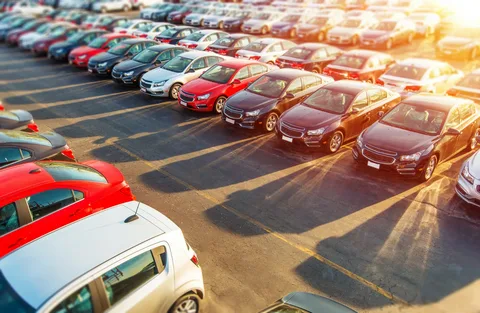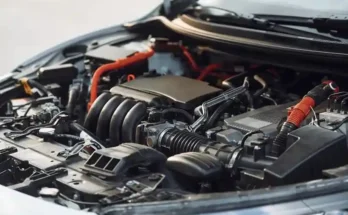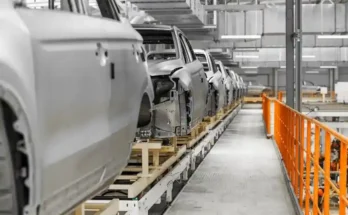The automobile is more than just a machine on wheels—it’s a symbol of freedom, identity, and progress. From the moment Karl Benz introduced the first gasoline-powered car in 1886, the industry has been an arena of constant evolution. Over the last century, automobiles have transitioned from luxury novelties to essential tools of daily life. Now, as we look into the future, a new chapter is being written—one powered by technology, sustainability, and smart innovation.
This takes a deep dive into the transformation of the automobile industry, exploring its history, current breakthroughs, and what lies on the road ahead.
The Evolution of the Automobile:
In the early 19th century, the first self-propelled road vehicles ran on steam. These machines were clunky, slow, and far from practical. Then came the internal combustion engine, and with it, a transportation revolution. By the early 20th century, automobiles became accessible thanks to Henry Ford’s assembly line, which brought mass production into the industry.
Cars became faster, more stylish, and more reliable. They grew from simple carriages with engines into complex mechanical masterpieces. In the post-World War II era, they evolved further, reflecting cultural trends, economic shifts, and technological advancements.
The modern automobile became more than transportation—it became a personal statement, a status symbol, and a central part of modern living.
Technology Takes the Wheel:
-
The Rise of Electric Vehicles
Perhaps the most dramatic shift in recent years is the rise of electric vehicles (EVs). Once viewed as slow and impractical, EVs now represent the cutting edge of automotive design and performance. Brands like Tesla, Rivian, and Lucid have changed public perception, proving that electric cars can be luxurious, powerful, and even thrilling to drive.
Governments around the world are offering incentives and implementing regulations to phase out fossil-fuel vehicles in favor of electric ones. Charging infrastructure is expanding rapidly, and battery technology continues to improve, promising greater range and faster charging times.
We are witnessing the slow decline of gasoline-powered engines and the ascent of electric propulsion, a shift as transformative as the original invention of the automobile itself.
-
Autonomous Vehicles
Self-driving cars have long been a dream of futurists and sci-fi fans. Today, that dream is closer to becoming reality than ever before. Companies like Waymo, Cruise, and Tesla are investing billions into autonomous vehicle (AV) technology, training their systems with millions of miles of data.
Advanced driver-assistance systems (ADAS) such as adaptive cruise control, lane-keeping assist, and automatic emergency braking are already standard in many new vehicles. These are the building blocks of full autonomy.
The potential is enormous. Autonomous vehicles promise to reduce traffic accidents, eliminate driver fatigue, and increase mobility for the elderly and disabled. But they also raise complex questions about safety, liability, and ethics that the industry and lawmakers are still grappling with.
-
The Role of Artificial Intelligence
Artificial intelligence is no longer just software in the dashboard—it’s becoming the brain of the vehicle. AI manages real-time traffic data, predicts driver behavior, personalizes in-car experiences, and powers voice-command systems that rival the likes of Alexa and Siri.
In autonomous cars, AI must interpret a world of chaos—pedestrians, cyclists, weather changes, traffic signals—and make decisions in milliseconds. These systems are constantly learning, improving, and adapting.
AI is also transforming how cars are built, from design simulations to robotic assembly lines that increase efficiency and reduce error. The smart car era is no longer ahead of us—it’s here.
Connectivity and the Smart Vehicle Revolution:
-
Cars That Talk and Think
The car is becoming a connected device, just like your smartphone. Vehicle-to-Everything (V2X) communication allows cars to “talk” to other vehicles, infrastructure, and even pedestrians. A car can warn you about an accident ahead, a red light turning green, or a slippery road surface before you get there.
These smart systems are designed to improve safety, efficiency, and convenience. They rely on 5G connectivity to provide real-time updates, streaming services, and seamless integration with smart homes and city infrastructure.
In the not-so-distant future, your car might schedule its own maintenance, order coffee from your favorite shop, and navigate around traffic jams using live data from other vehicles.
-
Infotainment and Digital Cockpits
Gone are the days of static dashboards and simple radio dials. Today’s cars come equipped with massive touchscreens, customizable digital displays, and voice-activated assistants. Brands like Mercedes-Benz and BMW are redefining luxury through digital experiences.
Entertainment is now immersive. Streaming, gaming, and personalized content are becoming part of the in-car journey. With the advent of autonomous driving, your vehicle may soon double as a mobile office or entertainment lounge.
The line between cars and consumer electronics is blurring fast.
Driving Toward a Greener Future:
-
Eco-Friendly Manufacturing and Materials
Sustainability isn’t limited to driving electric cars. Automakers are exploring recyclable materials, eco-conscious factories, and renewable energy to reduce their carbon footprint. Companies like Volvo and Polestar are leading the charge in transparency, publishing full lifecycle emissions of their vehicles.
Recycled plastics, natural fibers, and vegan leather are now common in many car interiors. Even paint processes are being redesigned to reduce environmental impact.
The industry is embracing a circular economy model—designing vehicles with the intention of disassembly and reuse, rather than disposal.
-
The Push for Net-Zero Emissions
With global pressure mounting to combat climate change, the automotive industry is committing to net-zero goals. Major manufacturers have announced targets to become carbon-neutral within the next few decades.
This push is not just ethical—it’s strategic. Consumers are demanding greener choices, and automakers that fail to adapt risk becoming irrelevant.
Electric mobility, renewable manufacturing, and intelligent logistics are all part of this grand transformation toward sustainability.
Challenges and the Road Ahead:
Despite rapid innovation, many challenges remain. Infrastructure for electric vehicles, especially in rural or developing regions, is still lacking. Autonomous vehicles face regulatory and ethical hurdles. Cybersecurity threats to connected cars pose a serious risk. There’s also a generational divide. While younger consumers embrace change, many older drivers remain skeptical of digital dashboards and autonomous driving features. The industry must balance cutting-edge innovation with mass-market accessibility, ensuring that no one is left behind in the mobility revolution.
Car ownership is also evolving. With the rise of ride-sharing, subscription models, and urban mobility solutions, the traditional idea of owning a car may become less appealing. In some cities, especially in Europe and Asia, people are moving away from ownership in favor of access and flexibility.
This cultural shift challenges automakers to rethink their business models. The car may become less of a product and more of a service—a change as disruptive as the shift to electric and autonomous vehicles.
Conclusion:
The automobile industry stands at a thrilling crossroads. Technology is redefining how we build, drive, and even think about cars. From electric powertrains to AI copilots, from sustainable materials to connected ecosystems—the change is not only visible, it’s accelerating.
For consumers, the future promises safer, cleaner, and more intelligent vehicles. For automakers, it’s a call to innovate or fade. And for society at large, the evolution of the automobile offers a path to smarter cities, greener lifestyles, and more accessible transportation.
The future isn’t waiting—it’s already rolling down the road. All you have to do is buckle up and enjoy the ride.




